The earth is full of crazy looking sportfish with bad attitudes. Fish that attack lures with a vengeance and possess enough unique characteristics to set them far apart from the ordinary. These are specimens that look as though they could tear off your face with one chomp of their jaws or else remove it with surgical precision.
These are not some obscure sea monsters living in the deepest depths of the ocean
or in some isolated alpine stream. This collection of gnarly fish reside in lakes and rivers across the globe and await the next angler who dares to cross their path.
10. Goliath Tigerfish
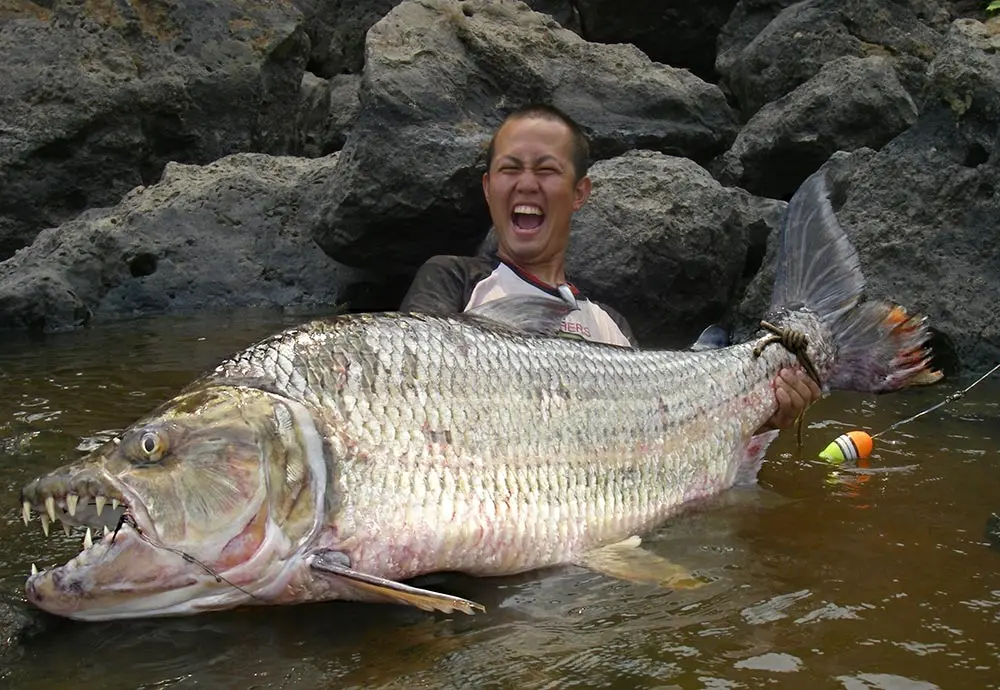
Goliath Tigerfish in the Congo
Anglers after goliath tigerfish may spend three to five weeks in the Democratic Republic of the Congo to hook just one or two fish.
Their 32 surgically-sharp teeth, deep body built for speed and agility, incredible leaping ability, raw strength, and top-end size pushing the 150-pound mark, make the goliath tigerfish among the meanest fish to grace planet Earth
.
Where Goliath Tigerfish Live:Found largely in the foreboding Congo River Basin of central Africa.
How Goliath Tigerfish Feed:Goliaths are rush feeders. They use their double-hinged jaws to attack prey much larger in size. Possessing teeth capable of piercing even the toughest flesh, they are fearless hunters that reportedly snack on small crocodiles, as well as anything else that crosses their path.
Best Lures for Goliath Tigerfish:The need to quickly cover vast areas of water to find these low-density fish, make larger, deep-diving crankbaits, such as Yo-Zuri 3D Magnum Deep Divers
, good options.
How Goliath Tigerfish Fight:Goliath tigerfish have everything anglers could hope for in a sportfish—that includes lightning-fast strikes, blistering speed that will drain a reel of line in seconds, brute strength to put a strain on the best of equipment, along with crazy acrobatic ability to leave anglers in awe. For those anglers who dare to pursue goliaths in the tumultuous Democratic Republic of the Congo, trip lengths of 3 to 5 weeks are typical with the hope of hooking even just one or two goliaths.
9. Muskies
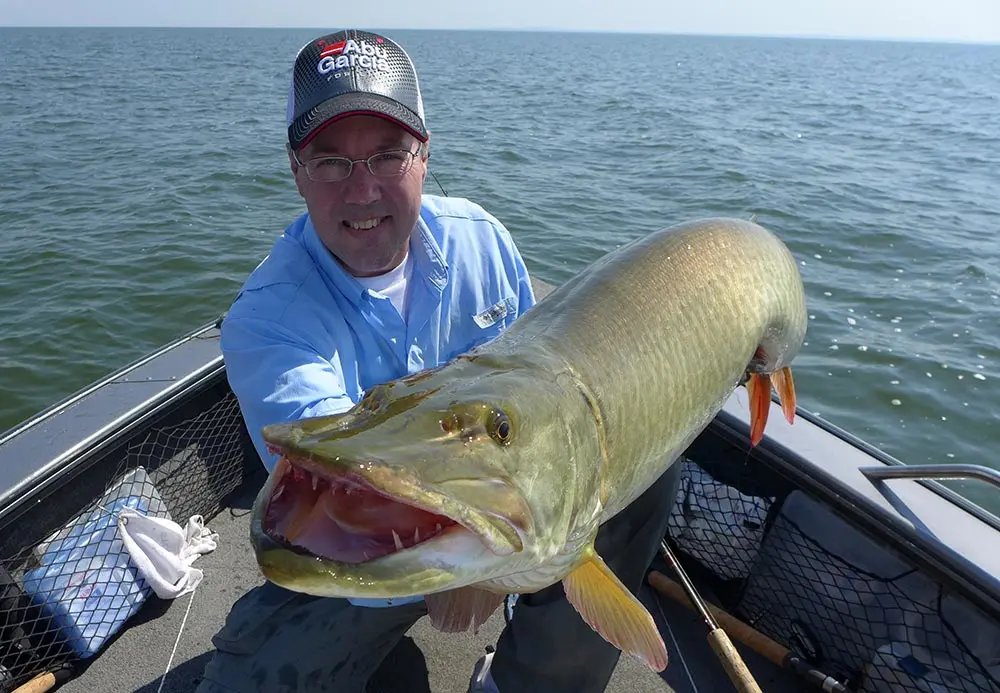
Muskies often strike lures right beside the boat, so add a figure-eight to the end of your retrieve to check for follows. Steve Ryan
With a death chamber for a mouth, muskies inhale prey and it rarely ever comes back out. The perimeters of their jaws are lined with dagger-like teeth designed to grasp and puncture, while the tops of their mouths are covered with hundreds of needle-sharp teeth slanted back toward their throats. Their propensity to strike lures at boatside on the figure-eight
gives fishing for them an added edginess.
Where Muskies Live:Broadly distributed throughout lakes and rivers of the mid-regions of North America.
How Muskies Feed:Muskies are both ambush and open-water rush feeders. They often grab their prey broadside prior to rotating it in their mouths and swallowing it head first.
Best Lures for Muskies:A wide assortment of lures will draw the ire of these apex predators, including noisy Whopper Plopper topwaters, oversized double 10 Spanky bucktails, 16-ounce soft rubber Bulldawgs, and giant HeadLock trolling lures.
How Muskies Fight:Muskies generate massive power and quick bursts of speed from their long, muscular frames. These fish put a spirited strain on even the heaviest gear used by today’s muskie hunters.
8. Black Piranha
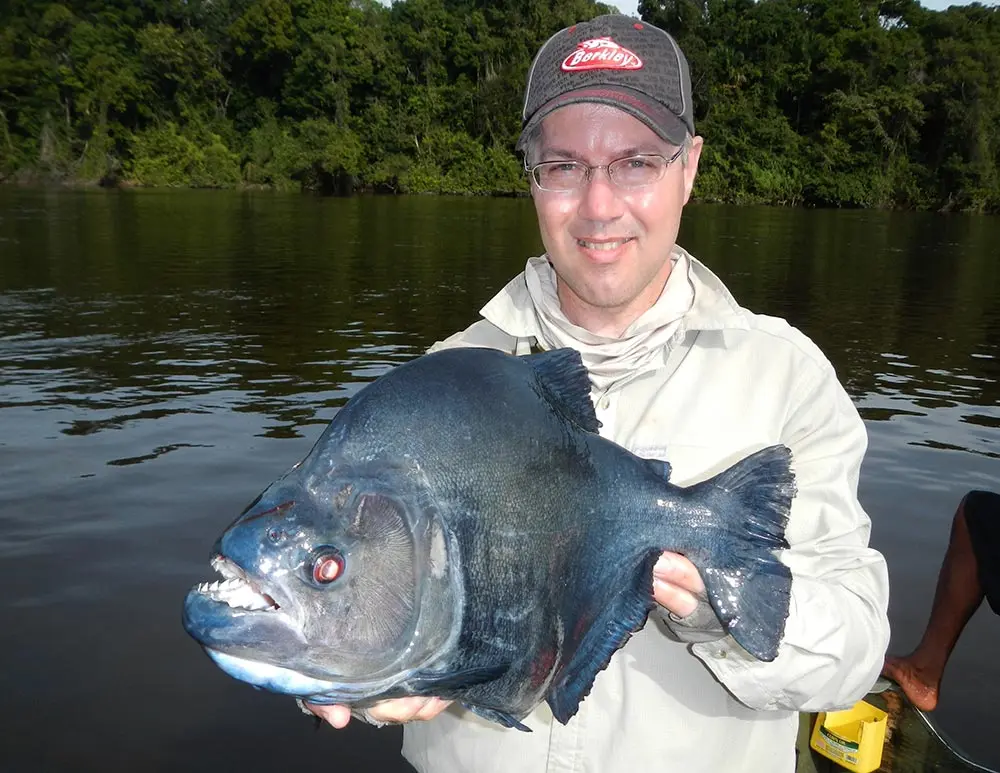
Black piranha fall for the vibration of lipless rattle baits or the flash of spoons, spinners and spinnerbaits, and often hunt their prey in packs. Steve Ryan
Serrated teeth and strong jaws allow these fish to cut through flesh, ligaments, and bones with ease. Piranhas make mincemeat of fishing line, light wire leaders, and 1X hooks. Menacing red eyes and a top-end, size pushing 10-pounds make them an angler’s worst nightmare.
Where Black Piranha Live:The Amazon, Orinoco River Basins and beyond in South America.
How Black Piranha Feed:Feeding in packs, piranhas are the hitmen of the jungle. They focus their attacks on wounded or bloodied prey and exploit those injuries by taking large chunks of flesh off with each bite. If an open wound doesn’t exist, piranhas start by immobilizing their prey, shredding their tails and fins.
Best Lures for Black Piranha:The vibration of lipless rattle baits and the flash of spoons, spinners, and spinnerbaits will get the attention of these ravenous fish. If the bite grows slow on these lures, a piece of cut bait on a jig
will get the job done.
How Black Piranha Fight:Imagine an angry eight-pound bluegill on steroids. Big black piranhas are drag pullers. They possess good speed and endurance and have a knack for finding and wrapping around submerged wood.
7. Arapaima
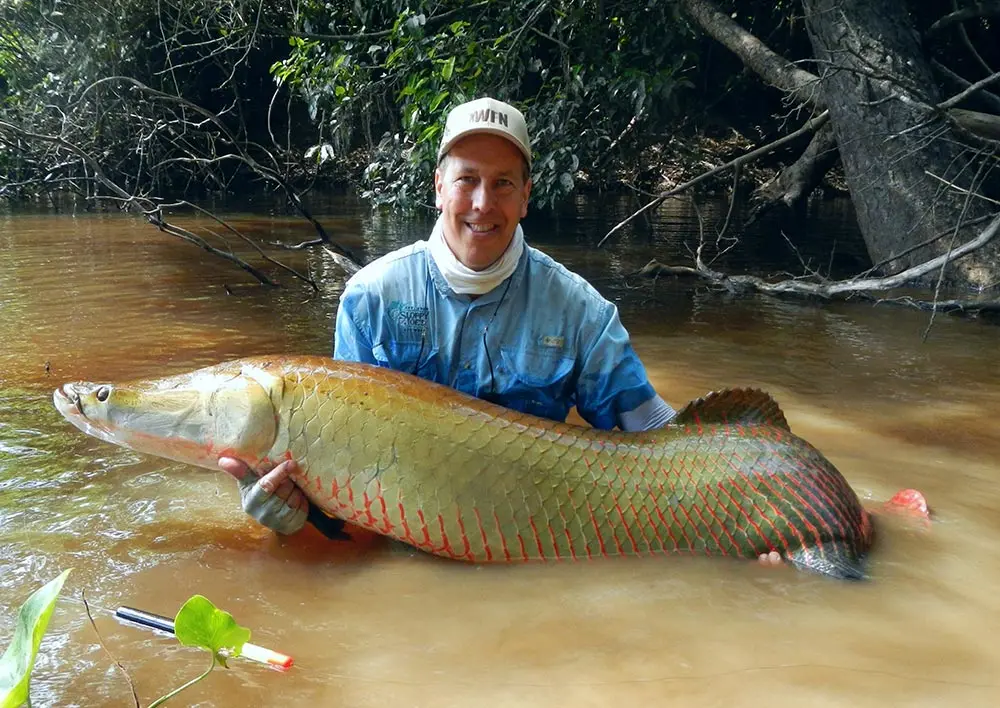
Be careful when taking your grip and grin photo. Arapaima often use their head as a weapon and can knock out any angler. Steve Ryan
Their top-end size surpassing 400-pounds, crimson-tipped scales, prehistoric anatomy that includes a primitive lung permitting atmospheric breathing, and a head as hard as steel, make the arapaima a gnarly fish worthy of every angler’s attention.
Where Arapaima Live:Primarily the Amazon and Essequibo River basins of South America, with ancillary populations in Bolivia, Peru, and Ecuador.
How Arapaima Feed:Opportunistic feeders, arapaima will both scavenge dead bait and hunt live prey weighing several pounds. Due to their ability to breath air, they can reside in lagoons with marginal oxygen levels during the dry season and then wreak havoc on oxygen-deprived prey. As they approach a bait, they quickly open their oversized mouths to suck the bait and surrounding water like a vacuum.
Best Lures for Arapaima:Articulating swimbaits, along with glide baits and large jerk baits, are prime lure options when fished slowly on heavy tackle. Anglers have also started targeting arapaima on the fly
.
How Arapaima Fight:Due to their large body mass, these fish have the ability to pull a boat around for more than 20 minutes before tiring. They make spectacular water-spraying jumps and incredible tail-walking displays across the surface. Adding to the challenge of landing these fish, arapaima commonly use their head as a weapon at boatside in an effort to snap lines, throw hooks, break rods, and even knockout anglers.
6. Giant Snakehead
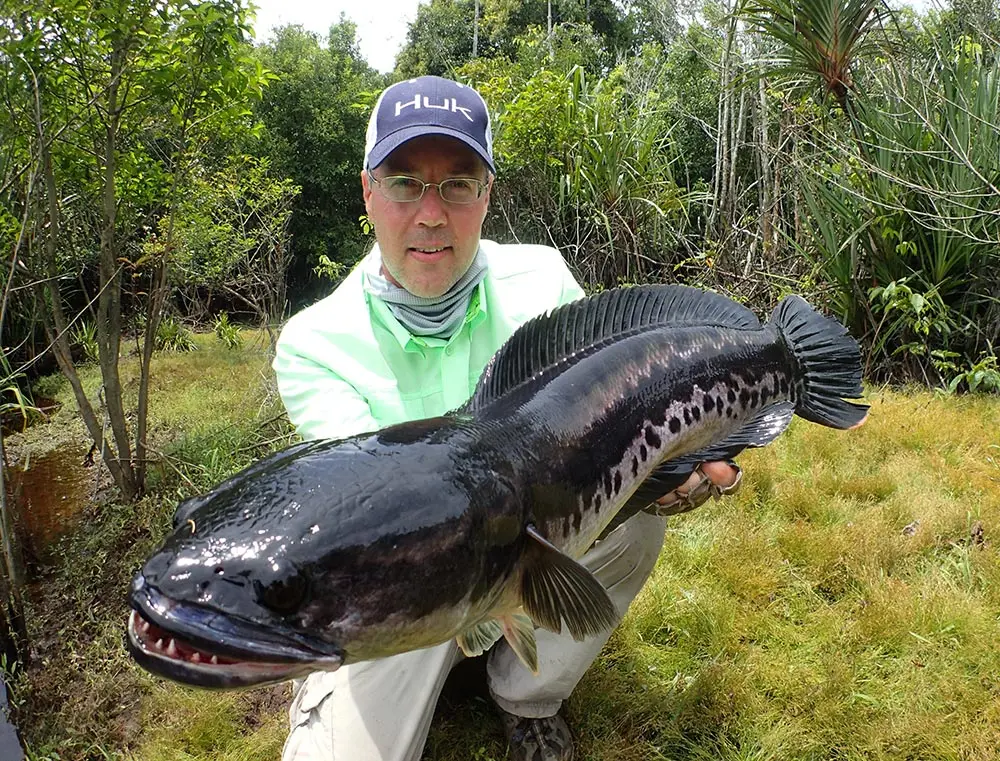
If a giant snakehead can’t bust your oversized braided line, or destroy your lure, you have a chance to catch the fish of nightmares. Steve Ryan
The broad snake-like head and formidable teeth on giant snakeheads are the things of horror movies. Their stealth, power, and tackle-destroying nature are enough to give any angler nightmares.
Where Giant Snakeheads Live:Rivers and reservoirs of Southeast Asia, including Thailand, Laos, Vietnam, Malaysia, and Indonesia.
How Giant Snakeheads Feed:Explosive strikes are the hallmark of giant snakeheads. They have the ability to cut a bait in two with one bite and then circle back to eat the second half. A large percentage of giant snakeheads strike lures out of sheer aggression, rather than hunger, as they actively guard their fry balls for weeks after they are born. They are comfortable exploding through heavy vegetation to crush a frog off the surface
, and equally adept at rush feeding a tilapia in open water.
Best Lures for Giant Snakeheads:Topwater frogs, buzzbaits, spinnerbaits, and deep-diving crankbaits are traditional favorites among snakehead anglers.
How Giant Snakeheads Fight:Strength, endurance, and guile are the calling card of giant snakeheads. These fish will blast a lure on the surface out of anger and then instantly dive 15 feet, pulling maximum drag off reels. They are capable of wrapping around submerged timber in mere seconds. If they can’t bust oversized braided line, they will straighten 3X treble hooks and destroy lures.
5. Golden Dorado
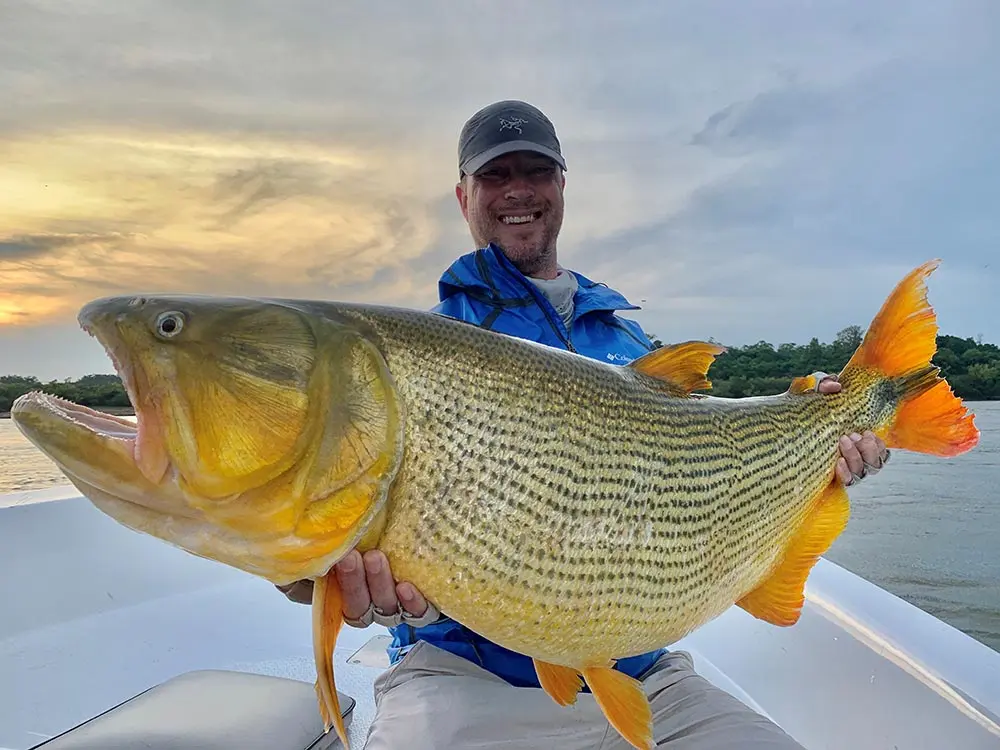
Trophy-size golden dorado like this one often attack other dorado nearly half their size. Steve Ryan
Razor-sharp teeth, powerful jaws, a mean attitude and bright golden coloration with black stripes give golden dorado their ‘river tiger’ nickname.
Where Golden Dorado Live:Rivers of South America, with primary populations residing in the Upper Paraná River of northeast Argentina
, as well as Uruguay, Paraguay and Bolivia.
How Golden Dorado Feed:Dorado feed both in packs and individually. They are slashing feeders capable of maiming multiple baitfish as they charge through bait pods situated along current seams. If a bait is too big to be swallowed whole, their powerful jaws will cut it down to a more manageable size. Being cannibalistic, trophy-size dorado are known to attack other dorado nearly half their size.
Best Lures for Golden Dorado:Large crankbaits such as Rapala Super Shad Raps
and Mag 18s
are among the most prolific lures for Dorado residing in fast-water tailrace settings. In smaller clear water settings, fly fishing tactics, as well as spoons, spinnerbaits and topwater, are effective for these aggressive predators.
How Golden Dorado Fight:Dorado hit lures with a vengeance. Once they feel the sting of the hook, they go airborne—violently thrashing their head to dislodge the lure. With broad muscular frames, dorado have the strength and stamina to go 12 rounds with anglers.
4. Wolf Fish
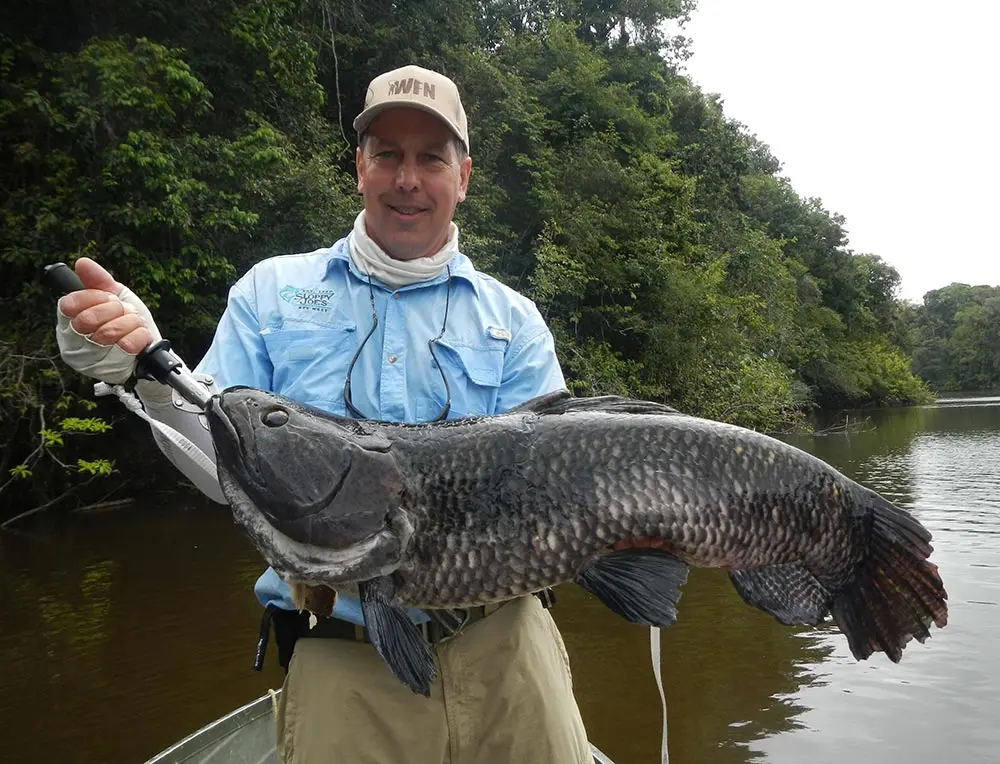
Among the hardest fighting fish in the jungle, wolf fish often smash surface poppers with power. Steve Ryan
There’s nothing pretty about wolf fish. They have an oversized head, a mouth full of formidable teeth, jet black eyes and an oversized tail.
Where Wolf Fish Live: Remote rivers of the northern half of South America, including portions of Venezuela, Guyana, Suriname, French Guiana, and Brazil, harbor the largest populations of these sporty fish.
How Wolf Fish Feed: Wolf fish hit prey not like they want to eat it, but as if they are looking to obliterate it. Residing behind boulders in fast-water settings and resting tight to overhanging cover, they often strike quickly as objects pass within their range. Their jaw strength is formidable.
Best Lures for Wolf Fish: Surface poppers offer the most visual excitement
for anglers, but a well-placed, heavy-duty spinnerbait or wake bait will get their attention.
How Wolf Fish Fight: Wolf fish are among the hardest fighting fish in the jungle. They have power and stamina in reserve.
3. Niugini Black Bass
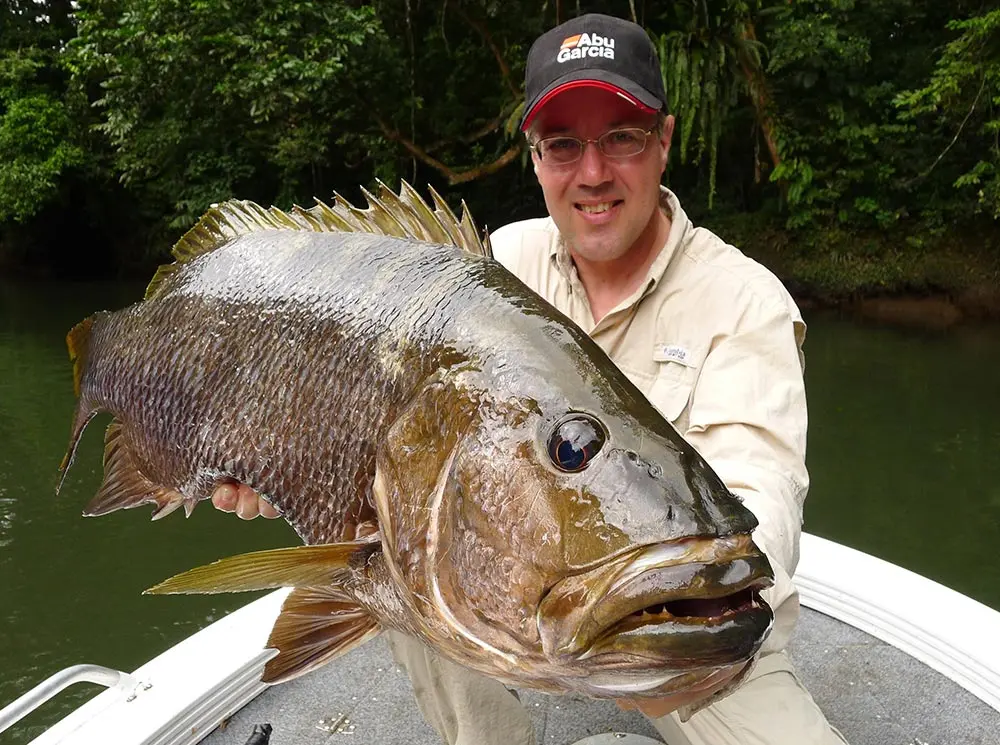
PNG Niugini Black Bass
The first 30 seconds with a trophy Niugini black bass are as memorable as anything in fishing.
These fish have canine teeth and crushing power to rival even the toughest fish in saltwater. They routinely rank among the hardest fighting fish in freshwater for good reason.
Where Niugini Black Bass Live:Remote clean water rivers of Papua New Guinea and Indonesia.
How Niugini Black Bass Feed:These brutes are ambush feeders that routinely position themselves among submerged trees and hit baits as they are heading back into their snag-filled lairs.
Best Lures for Niugini Black Bass:Big crankbaits fished tight to cover will get annihilated. Upgrade to XXH split rings and hooks or be ready to be owned by these fish.
How Niugini Black Bass Fight:Savage strength is the hallmark of Niugini black bass. On an exploratory trip to untouched rivers in PNG, we had 150-pound-test braided line snapped, lures smashed in two, reel drags stripped, rods ripped from anglers’ hands, and even had an experienced, international angler brought to his knees and then dragged across the bow of the boat by one of these beasts. The first 30 seconds with a trophy Niugini black bass are as memorable as anything in fishing.
2. Alligator Gar
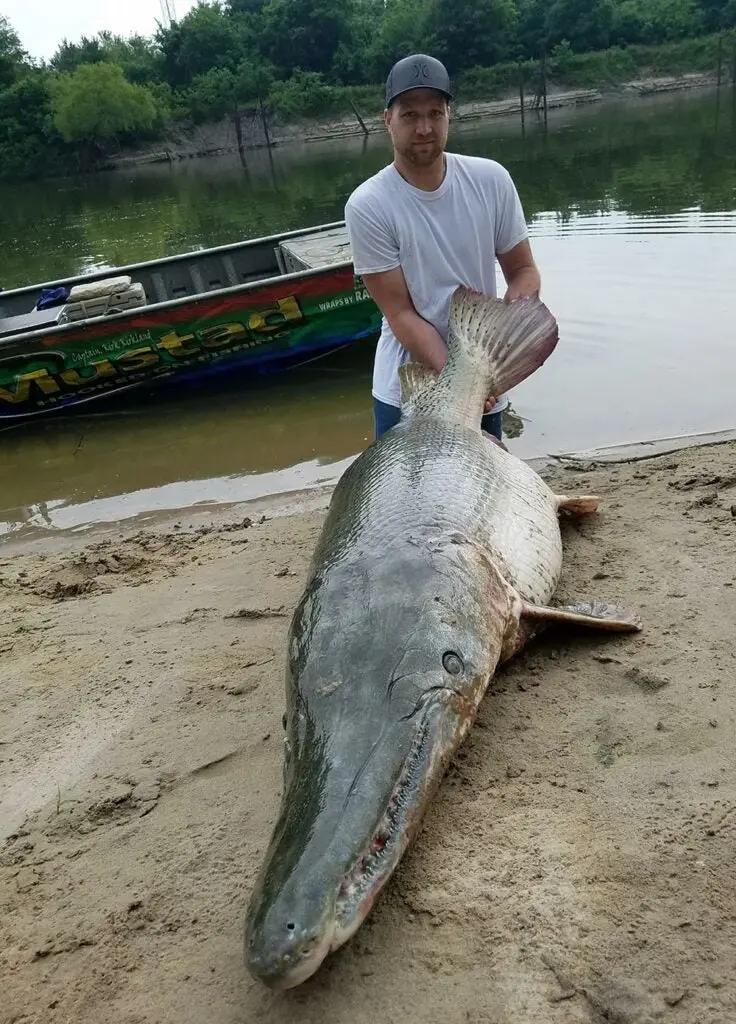
Alligator gar can reach more than 400-pounds, and their basic anatomy has gone unchanged since the time of dinosaurs. Steve Ryan
A basic anatomy that has gone unchanged since the time of dinosaurs, and a top-end size of more than 400-pounds distinguish alligator gar from every other fish out there. They rank so high on the gnarly meter that anglers have started to mix alligator gar facts and mythic legends.
Where Alligator Gar Live:The Gulf states of the U.S., as well as northern portions of Mexico with drainage to the Gulf of Mexico.
How Alligator Gar Feed:They eat almost anything that swims, flies or scurries within their range. A quick snap of their jaws will trap a bait in their mouth. They often work to crush the bait and then move-off to swallow it later.
Best Lures for Alligator Gar:Large Rat-L-Traps
worked slowly within range of their over-sized mouth will illicit savage strikes. Heavy duty spinnerbaits with a stout trailer hook can be fished around thick cover during periods of flooding when gar venture beyond the river banks.
How Alligator Gar Fight:Alligator gar are dirty fighters. They frequently swim into submerged trees to tangle lines and pull hooks. In open water, they use their body mass to pull around the boat and make spectacular head-thrashing leaps.
Read Next: The Ugliest Fish Ever
1. Payara
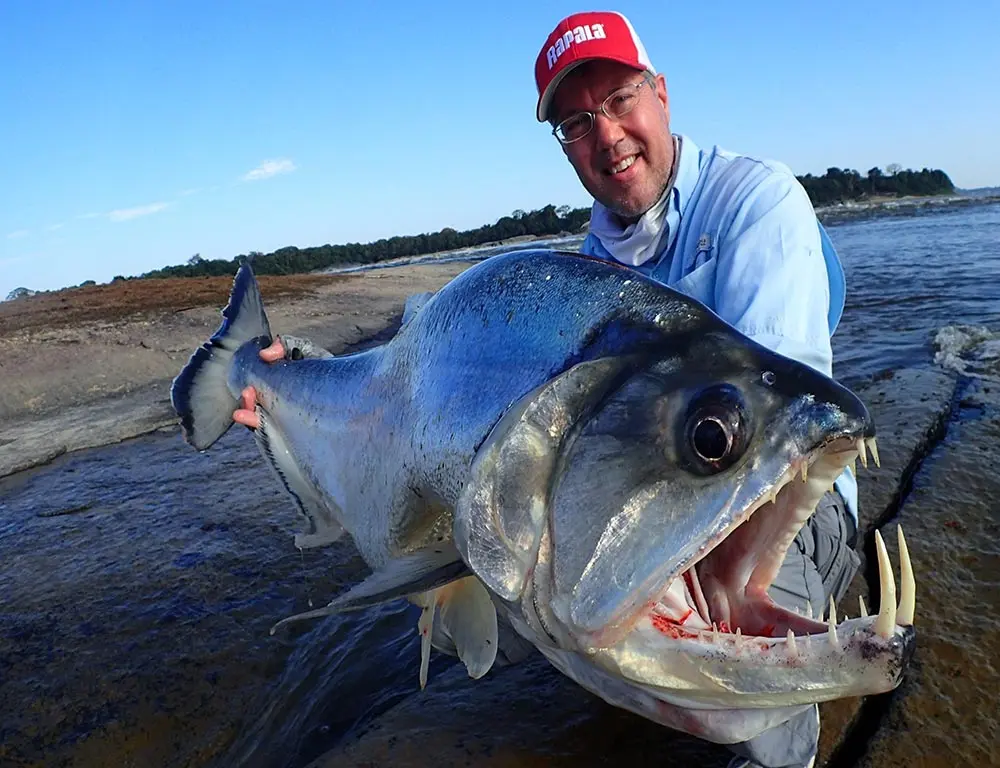
The two lower fangs of the payara perfectly slide into recessed holes in their top jaw—adding to their sinister look. Steve Ryan
Two pronounced fangs exceeding two-inches in length grow from their bottom jaw and slide perfectly into recessed holes in their top jaw. They possess a sinister look and the spirit of a killer.
Where Payara Live:Fast current areas of rivers across South America, with Venezuela and Colombia harboring some of the biggest specimens topping 30-pounds. Many anglers search the Amazon for payara and other exotic species
.
How Payara Feed:Pack hunters and slashing feeders. They impale and disorientate baits with their fangs and then come back to devour wounded prey. Strikes are lighting fast.
Best Lures for Payara:Large colorful crankbaits, including Mag 18 Rapalas
, are the best bet in strong current areas. Walk-the-dog surface lures work well in slick water areas adjacent to rapids.
How Payara Fight:On a recent Colombia fishing trip, I saw anglers have their rod-and-reel combos yanked from their hands by quick striking payara. In a fast current, these fish are nearly unstoppable, making blistering runs both upstream and down in Class 5 rapids to gain their freedom. Their leaping ability will put most fish to shame, and their hard, bony mouths make for a landing percentage of less than 50 percent.
![Field & Stream [dev]](https://images.ctfassets.net/fbkgl98xrr9f/1GnddAVcyeew2hQvUmrFpw/e4ca91baa53a1ecd66f76b1ef472932b/mob-logo.svg)




